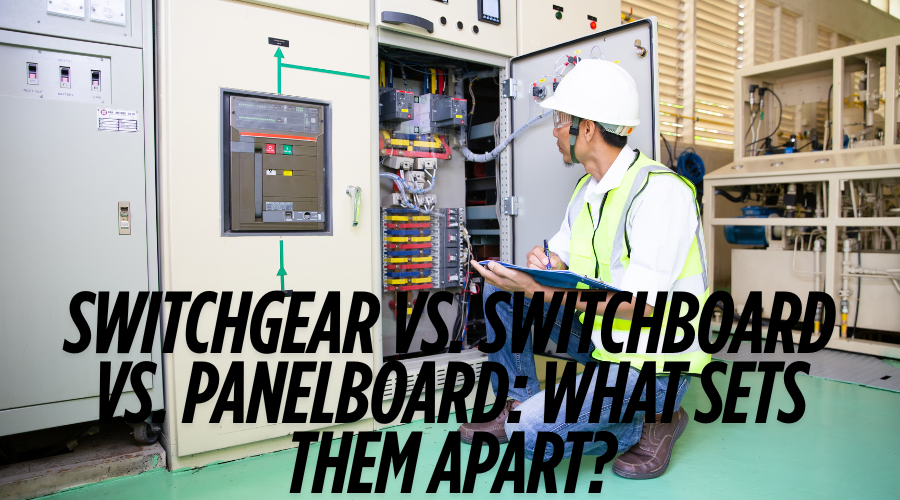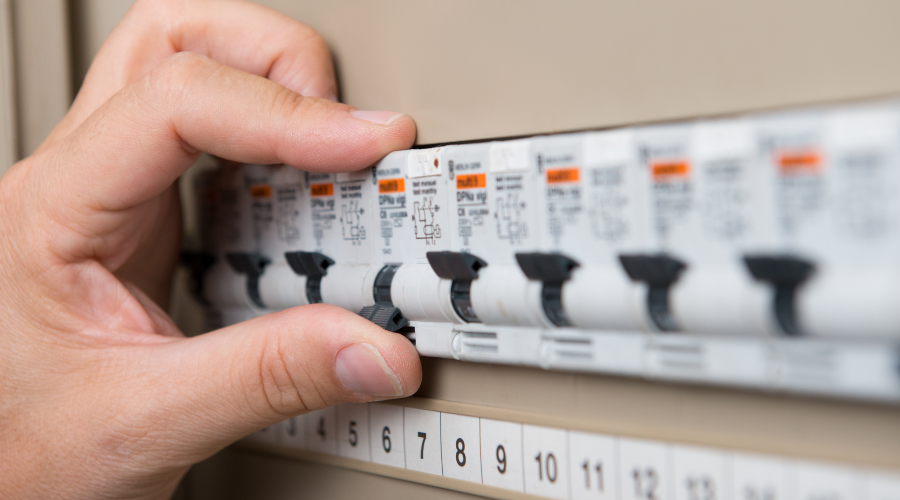


Switchgear, switchboard and panelboard are three circuit components that are present in nearly every circuit. But these components have a different role to pay, and if it was not for these components most of the appliances and equipment attached to the circuit would be destroyed due to overcharge or voltage fluctuation.
Here, we highlight how they differ and particular features of switchgear, switchboards, and panelboards, all of which relate to electrical distribution systems. Each component is vital to the safe control and distribution of electrical power. Understanding the differences can assist engineers, contractors, to make circuits that are efficient in electrical supply.
A panel board is a vital circuit component that ensures seamless electricity supply by dividing electrical power feed into partial circuits. Each partial or subsidiary circuit consists of a protective fuse or circuit breaker that is located in a common enclosure. The main function of the panel board is to divide the electrical supply into different circuits. Panelboards are similar to switchboards but their layout is different then that of the switchboard.
A key difference between panel board and switchboard is that the panelboard is mounted to the wall. The maximum amperes that flow through a panel board is lower than a switchboard as well and the limit is restricted to 1200 amperes and voltage of upto 600V. Panelboards are also the cheapest compared to switchboards and switchgears and they are also the smallest sized component compared to the three.
Panel boards are used to supply electricity in an organized manner to small circuits where the total electricity amperage is not very high. They are mostly part of residential circuits or office circuits.
Small Industries, Residential and Commercial buildings: For uniform and efficient distribution of electrical supply, to different parts of buildings from the main supply these panelboards are a crucial component of the circuit. The electrical current can be distributed to a building’s HVAC system, lighting system or electrical appliances.
Healthcare Facilities: In hospitals the panel boards serve the same function as in a residential or commercial building but they divert electricity to another aspect as well which is the medical appliances.
Although all panelboards have similar structure they can be classified into distinct groups depending on to the nature of application such as lighting panel board or power distribution panelboard etc. Other circuit components that can be classified as types of panel boards are main panel, subpanel and fusebox.
All panelboards consist of three basic components:
Circuit breaker
Main breaker
Bus bars
A switchboard’s main pupose is to divert electricity from one or multiple sources of supply to smaller areas of utilization. The layout of the switchboard consists of multiple or single panel. Each panel consists of switches that redirect the electricity flow. One distinct feature of switchboard is that they are fitted with overcurrent protection mechanism for their supply circuits. Unlike panel boards, switchboards are ground-mounted. The components of switchboard are arranged specifically to reroute power.
Switchboards have a maximum voltage rating of 600V. Since they are ground mounted they can be accessed for servicing through front and back side. Switchboard also consist of a meter which displays the amount of current passing though the switchboard. However switchboard design and layout does not consist of automatic safety features or components.

Switchboards are also a vital component of residential and commercial circuits. But they are also used in industrial circuits as well. The main purpose of switchboard os to divert main power supply to distribution equipment. In terms of affordability, switchboards are pricier than panel boards but cheaper than switchgear. Like panel boards switchboards are further classified according to the purpose of their application. Two main types of switchboards include general-purpose switchboards and fusible switchboards.
Panels and frames
Protective and control devices
Switches
Bus bars
Switchgears is a component that also divides the main electrical supply but their structure is quite different compared to panelboards and switchboards since it has individual components that can be turned on or off. A crucial purpose of switchgear is to stop current supply to equipment for maintenance purpose. Switchgear has the highest max voltage rating among the three components that goes upto 38kV and the voltage rating is up to 6000A. The reason for such high rating is because switchgear divides the main supply into different systems rather than single equipment and these systems can have low high or medium voltage.
Another aspect that differentiates switchgear form panelboard and switchboard is that it has components for automatic safety. Un terms of cost switgear is the most expensive of the three components. Switchgear can be used outdoors as well as indoors and there are usually three kind of switchgear: low-voltage, medium voltage and high-voltage.
Switching and powering main current distribution equipment like generators, power network and transformers.
Fault detection in a circuit and timely interruption before overload
Controlling the mechanism of power plants and power supply stations
Controlling transformers in power distribution system
Protection of large data centers.
Draw-out breakers: using draw-out breakers with switchgear means the electrical system does not need to be shut down for maintenance
Power switch components: circuit breakers, fuses, etc. These components cut off power in a circuit.
Power control components: control panels, transformers, protective relays. These parts are intended to control the power.
It is essential for experts in electronics to understand the differences among switchgear, switchboards and panelboards.Although these components may appear alike at first, each has a unique function within an electrical distribution system:
Switchgear provides the utmost level of control, protection, and switching functionality, generally utilized in medium to high-voltage industrial or utility settings.
Switchboards manage power at reduced voltages and are commonly located in commercial or extensive building environments, providing centralized management for several circuits.
It is common practice to use panelboards for distributing circuits in homes, smaller businesses or industry and these are usually installed on walls where any customer can access them. The equipment you need is based on the sector, the voltage required, safety and how much you are able to spend. Analyzing both the pros and cons helps build a safer, better and scalable electrical network.
What is the main difference between switchgear, switchboards, and panelboards?
Their main difference stems from their role in their function and capacity:
Panelboards distribute power to end-use circuits in homes or offices.
Switchboards manage power distribution for larger facilities with higher current loads.
Switchgear provides high-level control, protection, and isolation for industrial or utility-scale systems.
Which one should I use for a commercial building?
For most commercial buildings, a switchboard is ideal because it can handle higher power loads and offers centralized control. Panelboards may still be used for specific areas or floors, depending on the building's layout and electrical needs.
Is switchgear only used in high-voltage applications?
Not always. While switchgear is often used in medium- to high-voltage environments (like substations or large industrial plants), low-voltage switchgear is also common in critical facilities like data centers and hospitals that require advanced protection and reliability.
The advent of smart grids has changed how electric power is produced, distributed, and consumed.
READ FULLHigh Voltage Switchgear It is a
READ FULLTransformer substations are like the core of our electrical systems. They transfer power to our h
READ FULL